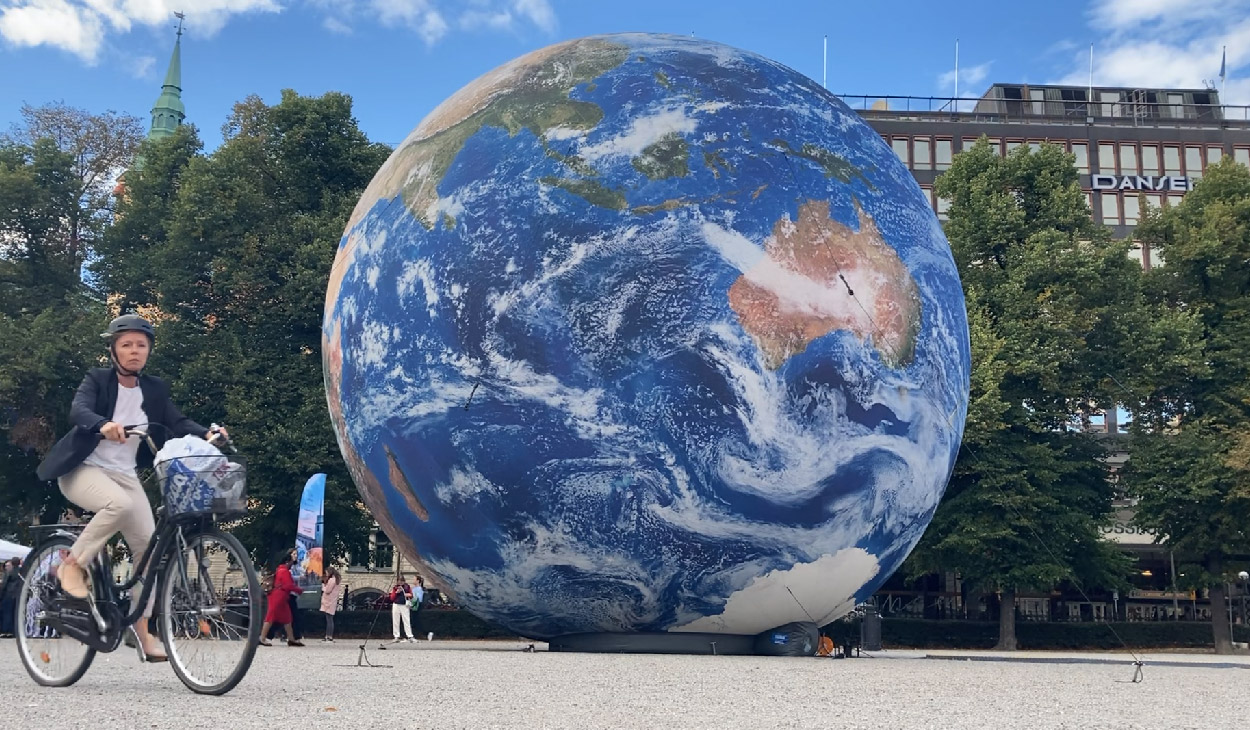Unravelling this year’s theme of ‘Seeing the unseen: The value of water’, GWP co-organised and participated in more than 20 events at World Water Week 2022, with participants joining both online and on-site sessions in Stockholm.
Building resilience to droughts and floods
The impacts of climate change can be seen in the increasing number of floods and droughts affecting people in different parts of the world. GWP highlighted its work on building resilience to drought and flooding to safeguard populations and reduce poverty in the context of climate change. In partnership with WMO, GWP supports the Integrated Drought Management Programme and the Associated Programme on Flood Management, which is celebrating its 20th Anniversary. GWP furthers additional important work in this area through its membership in the Water and Climate Coalition Leaders Panel and the High-Level Experts and Leaders Panel on Water and Disasters.
During World Water Week, GWP participated in several sessions focused on drought management, including: Closing the last mile: People-centric flood & drought early warning systems, Enhancing resilience of ecosystems and society against droughts and Co-implementing Integrated Drought Management: the next decade.
There are many strategies available for mitigating and adapting to the effects of droughts and floods. For example, Early Warning Systems for floods and droughts are more effective when communities are engaged in their design and operation. Valentin Aich, GWP’s Senior Water and Climate Specialist, affirmed, “an Early Warning System only helps if it actually reaches the people and if the people know how to react to it.” Stakeholder participation, educational programs, and public awareness are critical to planning the responses that protect vulnerable communities.
Raising the ambition for a water secure world
Together with its partners, GWP hosted a ‘coffee in the park’ event where World Water Week participants were able to share their ideas with special envoys Henk Ovink (The Netherlands) and Sulton Rahimzoda (Tajikistan) for the UN 2023 Water Conference, including steps which must be taken to bring about lasting change for a secure world.
Mina Guli, CEO of Thirst Foundation, said there is a need to break the traditional silos that have existed in water management, “This has also shown us the importance of engaging beyond the water community…I want the legacy of the 2023 Water Conference to be that everyone, everywhere, understands the value of water”.
A people-powered GWP Toolbox IMRM Action Hub
During the Water and Climate: Act, learn, scale-up event, GWP introduced the winners of the MiniMax Competition: Solutions for Managing Water and Climate Extremes and showcased their innovations.
Anna Rita Scorzini explained the MOVIDA Project in Italy, which leads the way to flood risk reduction assessments by harnessing the power of data and technology: “Our solution was to bring research and practitioners together by sharing knowledge…we found that during our project, this kind of collaboration could be scaled-up at every level.”
Graziela Ariani Olua, from the Indonesian Agency for Meteorology, Climatology and Geophysics (BMKG), spoke of the innovative project she is involved in which raises awareness about early warning systems among youth and those with disabilities, “We are making songs for kids to understand so that their engagement can be at the centre of disaster preparedness.”
Muthi Nhlema, from BASEflow in Malawi, shared learnings from his project which involved using data from previous initiatives to inform water decision making during a crisis. His advice to those in the water community was to, “Try to find out what already exists before you start to reinvent the wheel.”
The Minimax winning solutions are case studies available on the GWP Toolbox IWRM Action Hub, which was also highlighted during this session.
Transforming the investment outlook for water and sanitation in Africa
The heads of the High-Level Panel on Water Investments for Africa presented progress in developing an investment action plan and pathways for mobilising USD 30 billion annually by 2030. This event included the presentation of the Road Map of the High-Level Panel towards COP27 and the UN 2023 Water Conference.
Addressing the panel, H.E Jakaya Kikwete said, “Huge influxes of money are required to implement the AIP [Africa Water Investment Programme] for water security and sustainable sanitation in Africa.”
Embedding equity and inclusion into water and climate
When it comes to drought management and inclusion, there is untapped potential because women and young people, while often the most impacted, are also among the most capable of leading the fight for resilience.
The Building Your Water and Climate Career session included advice for young people wanting to enter into water management roles. GWP’s Danielle Gaillard-Picher brought a question to the participants, "are you at the table because you are youth, or because you have something special that you can bring?"
GWP also co-organised with the Community of Women in Water two networking sessions “Stronger Together”, attended by 60 women engaged in the water sector. Kathryin Pharr from Community of Women in Water said, “It has been such a great Water Women Monday. We were grateful to be part of the amazing group of organizers for this event”.
Bridging WASH and IWRM
Achieving water security requires collaboration between the IWRM (Integrated Water Resources Management) and WASH (Water, Sanitation, and Hygiene) sectors. Despite the fact that there is widespread agreement on the value of partnering to achieve larger shared objectives, the implementation of such partnerships requires considerable effort.
In the session “Connecting WRM and WASH for a climate-resilient future”, Andy Roby of the UK’s Foreign and Commonwealth Development Office (FCDO) said, ‘We are tribal by nature but what is bringing us together [WASH and IWRM] is climate change.” FCDO is financing the GWP-UNICEF Global Water Leadership Programme which is bridging the gap between the two communities.

